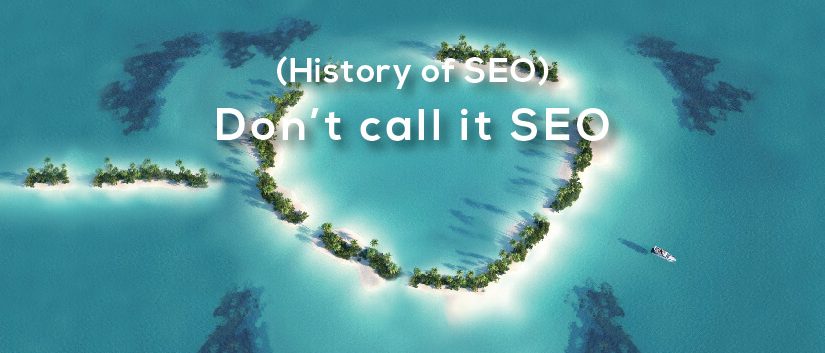From webmaster to SEO
Story of a conflictive relationship with search engines
History of SEO
Since the
first website was created in 1991, search engine were born with the task of indexing all pages and informations that were gradually populating the network.
Actually in the beginning the search engines were directories, starting from Archie, which offered nothing more than a list of downloadable link via FTP. The webmaster’s work was limited to send page addresses to various search engines, urging the spider to visit the pages and the indexer to extract the contents.
The key dates that gave birth to SEO are:
1994: WebCrawler is live. It’s the first search engine able to index every single word of every page
1996: Larry Page and Sergey Brin create BackRub, which then takes the name of Google
2009: Google introduces the Caffeine update
Algorithms are born
In the decade 1999-2009 the various search engines, AltaVista, Google, Yahoo!, Lycos and Infoseek have refined their algorithms, providing factors that would allow a better positioning of websites in the directory or in the SERP, rising gradually from the “exact-match” system to the “best-match” system. The SEO’s had to become familiar with meta keywords, meta-title, hyperlinks (hyperlinks) and even with the site structure and the keyword density.
Tecniche black-hat
A series of different techniques were born, aiming to ranking manipulation, generating the development of large “link farms” (initially created to attack Inktomi, the algorithm of Yahoo!) in which industrial quantities of link were sold, exchanged and bought.These techniques, called nowadays black-hat, led the search engines to focus on far more complex parameters. Google’s success is due in part to this: the ability to deal more effectively with the attempts of ranking manipulation. Caffeine first in 2009, then with Panda (2011), Penguin (2012) and finally in 2013 Hummingbird.
Google: the boomerang effect
These Google updates had a devastating effect on the unlawful practices of black-hat between 2010 and 2012. Those who do not adapted quickly to the new rules was severely penalized, having their links disappeared from the SERP. E.g. BMW.de, J.C.Penney, Overstock, Expedia.
Penalties
The penalties have been (and still are) primarily assigned for these four reasons:
Paid links
With the advent of Penguin the context of a link has become relevant, so the purchase of large numbers of links from sites with bad link juice, not contextualized and low quality does not guarantee any benefit anymore.
Spam comments
Today all blogging platforms add the “nofollow” tag by default in the comment management (for info, see item 33 of the Google SEO factors). But for many years posting comments with links was normal practice of black-hat SEO.
Blog networks and guest posts
blog networks whose sole purpose is to create pages with content that lead to backlinks. In this case we speak of “guest posts”, which still exist today, but we tend to contextualize the content.
SEO today
For those who have been able to follow this world closely, the changes were huge. Search engines have forced the brand to gain ranking positions by focusing on quality content built around the user and by focusing on the social networks to create engagement and allow the content to spread and earn valuable backlinks. Techniques that are part of SMM (Social Media Marketing), which have a strong impact on the ranking.
A versatile and multifaceted professional
So, whereas previously the expert’s role in Search Engine Optimization was to check that all the pages were perfectly readable by the crawler, today the variables have increased exponentially, as well as the techniques available.
Today the SEO expert has also a fundamental role in the development process of a website, giving instructions on the logical tree structure, he develops and analyzes the code, he deals with usability and user experience and works on conversions optimization!
How could we define the SEO today?
In conclusion, the SEO today could be defined as an analyst of content network and channels on which the content are conveyed, with the purpose of optimizing the ranking of links on the SERPs of the search engines, both in absolute terms and in relative terms to competitiveness of the reference market.







